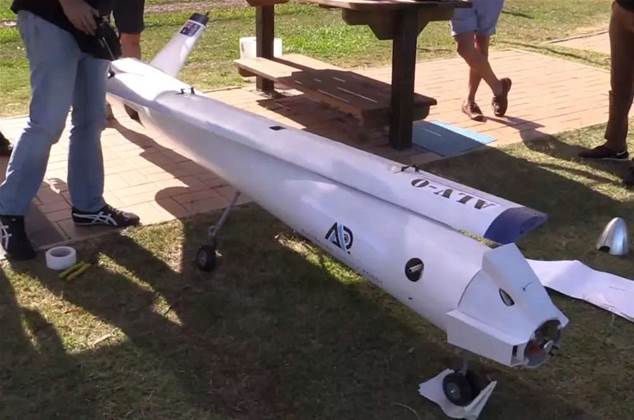An Australian project to create a reusable vehicle to launch small satellites is a step closer after flying a small-scale test model in Brisbane.

The test vehicle was built and flown by Australian Droid and Robot, a drone start-up by Dr Joe Cronin – best known for managing the load haul dump (LHD) automation project at the former Rio Tinto-owned Northparkes mine in NSW – and rocket scientist Dawid Preller.
The entire Austral Launch Vehicle (ALV) project is being run by Heliaq Engineering Services and involves multiple partners including Australian Droid and Robot and the University of Queensland.
The project aims to improve the economics of launching small satellites by returning and then reusing the first stage rocket engines, which account for “at least 50 percent of the cost” of a launch vehicle, Heliaq said in a statement.
Rather than drop away and fall into the ocean once their job is done, the first stage rockets on the ALV will ultimately “deploy wings and a propeller motor, so [they] can safely return to base”, UQ said.
“One of the further big advantages of the ALV booster concept is that it is essentially a very large UAV when returning,” Heliaq noted.
“The entire return flight can therefore be tested by taking off, flying and landing like a conventional aircraft from a runway.
“This massively reduces development complexity, since we don't have to launch a vehicle (which is very expensive) every time we wish to test an aspect of the return flight or landing.”
UQ system set to launch Australia into space from The University of Queensland on Vimeo.
UQ’s chair of hypersonic propulsion Professor Michael Smart – who was also involved in the test flight – believed the ALV, once completed, could make Australia a destination for small satellite launches.
He said about 400 such launches were expected worldwide in 2016 alone. Heliaq defines small satellites as those between five and 50kg.
“I think there is real potential for Australia to become the ‘go-to’ country for small satellite launches, and I see this as playing a vital role in Australia’s innovation revolution,” Smart said.
Heliaq said the test flight learnings would be integrated into future larger-scale ALV designs.

.png&h=140&w=231&c=1&s=0)





.png&w=100&c=1&s=0)
_page-0001.jpg&w=100&c=1&s=0)
.png&w=120&c=1&s=0) Tech in Gov 2025
Tech in Gov 2025
 Forrester's Technology & Innovation Summit APAC 2025
Forrester's Technology & Innovation Summit APAC 2025
 Local Government Focus Day Western Australia
Local Government Focus Day Western Australia
 Digital Leadership Day Western Australia
Digital Leadership Day Western Australia
 Government Cyber Security Showcase Western Australia
Government Cyber Security Showcase Western Australia






.jpg&h=271&w=480&c=1&s=1)




.jpg&h=140&w=231&c=1&s=0)

.jpg&h=236&w=349&c=1&s=1)

